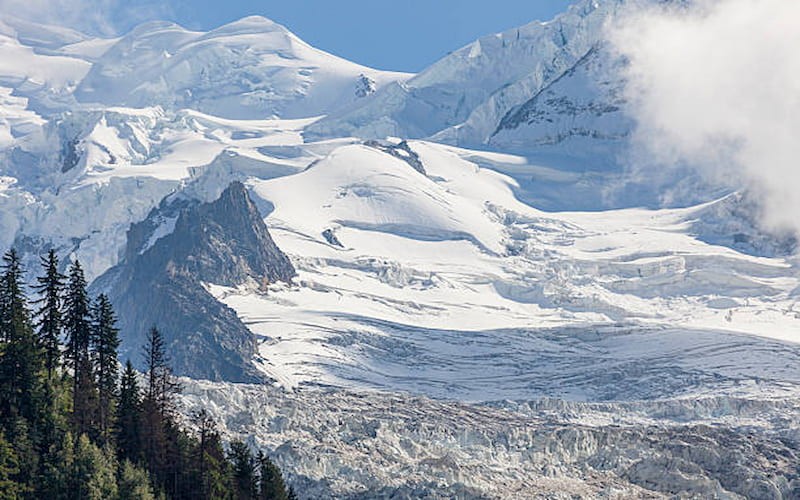Planning a trip to Europe is always a dream for travelers around the world. With its rich culture, historic architecture, romantic cities, and stunning natural beauty, Europe attracts millions of visitors every year. But one question always lingers for travelers — When is the best time to visit Europe? Should you explore during the magical winter months when cities sparkle with Christmas lights, or should you go in the lively summer when festivals fill the streets and the beaches glow under the sun? Deciding between Winter vs. Summer in Europe can be challenging because both seasons have their own charm and advantages.
Europe changes dramatically between these two seasons. Winter brings snow-covered landscapes, festive Christmas markets, cozy mountain lodges, and smaller tourist crowds. On the other hand, summer invites travelers with warm weather, long daylight hours, beach escapes, and lively cultural events. Whether you are crafting a detailed Europe travel itinerary or looking for guidance to plan the ideal trip to Europe, understanding what each season offers will help you choose the right time based on your preferences, budget, and activities.
With expert insights and travel planning support from trusted tour partners like Gokite Tours, you can turn your European adventure into a seamless, unforgettable experience. Let’s dive deep into the comparison of Winter vs. Summer in Europe to help you find the best time for your next grand escape.
Winter in Europe: The Season of Charm and Celebration
When you think of winter in Europe, picture fairy-tale towns blanketed in snow, steaming mugs of hot chocolate, and enchanting Christmas markets. Winter, which generally lasts from December to February, transforms Europe into a magical wonderland. Cities like Prague, Vienna, Paris, and Munich glow with festive decorations, and mountain destinations like the Swiss Alps or Austria’s Tyrol region attract skiers from around the world.
1. Weather and Scenery
Winter in Europe can be cold, with temperatures ranging from -5°C to 10°C depending on the region. Northern and Eastern Europe experience snow and frosty winds, while Southern Europe — like Spain, Portugal, and Italy — stays relatively mild. The scenery varies from snow-capped peaks to misty rivers and glowing city lights. This is the perfect time to capture postcard-worthy photos and enjoy peaceful city walks without the summer crowds.
2. Festive Spirit and Christmas Markets
One of the biggest reasons travelers love winter in Europe is the festive atmosphere. Cities like Vienna, Strasbourg, and Dresden host famous Christmas markets where you can shop for handmade ornaments, taste local treats, and sip mulled wine. The holiday lights, carols, and decorations make the cities look like living fairy tales — ideal for families and couples alike.
3. Activities and Experiences
Winter offers a wide range of activities — skiing in the Swiss Alps, snowboarding in Austria, exploring ice hotels in Sweden, or joining New Year’s Eve celebrations in London or Berlin. For those who prefer cultural experiences, it’s also a great time to visit museums, art galleries, and theaters without long queues.
4. Fewer Crowds and Better Deals
One of the top benefits of visiting Europe in winter is the lower tourist volume. Popular attractions like the Louvre, Colosseum, or Buckingham Palace are far less crowded. You can also find great deals on flights and hotels, especially outside of Christmas and New Year’s weeks. Budget travelers planning a trip to Europe can save significantly during this period.
5. Perfect Destinations for Winter
- Switzerland: Ideal for skiing and scenic train journeys.
- Austria: Famous for Vienna’s Christmas markets and Salzburg’s music festivals.
- Germany: Home to magical winter fairs and historic castles dusted with snow.
- France: Paris is serene and romantic during winter evenings.
- Czech Republic: Prague turns into a snow-covered medieval dream.
Summer in Europe: The Season of Sunshine and Festivals
Summer, from June to August, is the most popular travel season in Europe. It’s when cities come alive, beaches fill with sunseekers, and music festivals light up every corner of the continent. For travelers planning their Europe travel itinerary, summer means endless opportunities for outdoor exploration, cultural festivals, and relaxation under the sun.
1. Weather and Atmosphere
The summer months bring warm to hot temperatures, ranging between 20°C and 35°C, depending on the location. Northern Europe enjoys mild weather perfect for hiking and sightseeing, while the Mediterranean coast offers sunny beaches and blue seas. Cities like Paris, Rome, and Barcelona buzz with tourists, open-air cafes, and outdoor performances.
2. Festivals and Events
Summer in Europe is synonymous with celebration. You’ll find music festivals in every major city, from Tomorrowland in Belgium to Glastonbury in the UK. Italy and Spain host lively local fiestas, while France and Germany offer cultural events and open-air theater performances. This makes summer perfect for travelers who love energy, entertainment, and nightlife.
3. Outdoor Adventures
If you’re an adventure lover, summer is your season. You can hike in the Swiss Alps, kayak in Norway’s fjords, cycle through the French countryside, or sail the Greek islands. Long daylight hours (often up to 16 hours a day) give you more time to explore, making your trip to Europe even more fulfilling.
4. Beach Escapes and Coastal Retreats
From Croatia’s Adriatic coastline to the Amalfi Coast in Italy and Santorini in Greece, Europe’s beaches are at their best during summer. The crystal-clear waters, vibrant nightlife, and local seafood make coastal regions a must-visit during this season. Mediterranean destinations offer both relaxation and adventure.
5. Bustling Cities and Crowded Attractions
While summer offers incredible vibrancy, it also brings heavy crowds and higher prices. Major attractions like the Eiffel Tower or Colosseum can have long queues. Hotel rates and airfares peak during these months, so booking in advance or choosing lesser-known cities like Ljubljana, Porto, or Tallinn can help balance cost and experience.
6. Perfect Destinations for Summer
- Italy: Rome, Florence, and Amalfi Coast for culture and beaches.
- Spain: Barcelona, Seville, and Ibiza for nightlife and festivals.
- France: Paris, Nice, and Provence for art, food, and lavender fields.
- Greece: Athens and islands like Santorini or Crete for sunshine and history.
- Norway: Perfect for fjord cruises and midnight sun experiences.
Which Season is Best for You?
Choose Winter If:
- You love cozy atmospheres, festive lights, and snow-covered landscapes.
- You prefer peaceful travel without crowds.
- You want to save on flights and accommodation.
- You enjoy skiing, hot chocolate, and cultural exploration indoors.
Choose Summer If:
- You enjoy outdoor adventures, long walks, and beach time.
- You want to attend festivals and events.
- You don’t mind crowds and higher costs for a lively atmosphere.
- You love warm weather and extended daylight.
Ultimately, both seasons offer unforgettable experiences depending on your travel style.
Tips for Planning Your Trip to Europe
- Plan Early: Book flights and hotels well in advance, especially for summer.
- Balance Your Itinerary: Mix famous cities with hidden gems to avoid crowds.
- Pack Smart: Lightweight clothing for summer, layered outfits for winter.
- Stay Flexible: Weather and festivals can influence travel plans, so stay open.
- Use a Reliable Travel Partner: Companies like Gokite Tours specialize in crafting personalized itineraries for every season, helping travelers maximize their experience effortlessly.
Whether you’re going for a cozy winter escape or a sunny summer exploration, your trip to Europe can be customized perfectly with expert guidance.
Conclusion
Choosing between Winter vs. Summer in Europe ultimately depends on your personal travel preferences, budget, and interests. Winter brings an intimate, romantic, and magical feel to your journey — think of quiet cobblestone streets, snow-covered castles, and glowing Christmas markets. Summer, in contrast, celebrates life with warmth, festivals, and outdoor adventures under the sun. Both seasons showcase Europe’s timeless beauty in completely different lights.
If you want to experience festive traditions, enjoy peaceful sightseeing, or travel on a budget, winter is ideal. But if you crave long days, beach escapes, and a vibrant cultural atmosphere, summer will steal your heart. Whatever your choice, ensure your Europe travel itinerary is well-planned and tailored to your needs. With the professional support of Gokite Tours, your dream trip to Europe can be smooth, enjoyable, and unforgettable — no matter which season you choose. Whether you prefer snowflakes or sunshine, Europe will always welcome you with open arms and countless memories waiting to be made.



